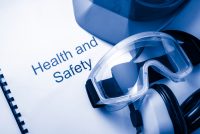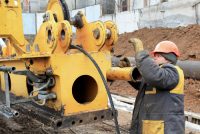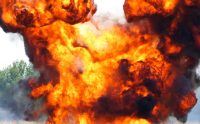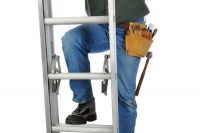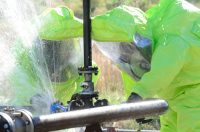Category: Special Topics in Safety Management
Safety is a process, and as such, needs to be managed. This section offers resources to create a viable safety program, sell it to senior management, train supervisors and employees in using it, and then track and report your progress. Look also for ways to advance your own skills in these areas, both for your current job, and those that follow.
Are chemical-resistant gloves required in your workplace? How do you select the right ones? When it comes to chemical-resistant gloves, several choices exist, and there are a number of issues to consider when selecting the right glove: Consider the type of chemical. Acids, caustics, solvents, and oils have different requirements for gloves. Chemical contact considerations […]
OSHA says 70 percent of workers sustaining hand injuries were not wearing gloves, and that the other 30 percent were wearing improper or damaged gloves. These estimates underscore the need for proper glove selection and care. Some general glove use and care instructions for your next safety meeting on hand protection include: Make sure the […]
OSHA’s lockout/tagout standard [29 CFR 1910.147] requires employers and employees to take proper steps to prevent unexpected machine startup accidents.
Workers are at risk of severe injury and death during machine maintenance and servicing if proper lockout/tagout procedures are not followed. Over a 25-year period, NIOSH investigated 185 fatalities related to installation, maintenance, service, or repair tasks on or near machines, equipment, processes, or systems. Investigations were carried out in 20 states as part of […]
Controlling combustible dust hazards is essential for preventing catastrophic accidents, and control begins with assessment and training. OSHA says that facilities that may have combustible dust hazards should carefully identify the following in order to assess their potential for dust explosions: Materials that can be combustible when finely divided Processes which use, consume, or produce […]
In today’s Advisor, we focus on standards and other considerations that can help manage combustible dust hazards.
Today, we present some questions about ladder safety sent to Safety.BLR.com by safety professionals and other managers, with answers from our experts. Are ladder safety cables required to have an annual inspection? 1926.1053(b)(15) Ladders shall be inspected by a competent person for visible defects on a periodic basis and after any occurrence that could affect […]
A NIOSH research team finds that 43 percent of fatal falls in the U.S. involve a ladder. Among workers, about 20 percent of fall injuries involve ladders.
By Tom Reddon Rough terrain forklifts require the right operators to handle them or it can lead to serious accidents. The workhorses are designed to handle heavy loads and operate on challenging terrain. Most rough terrain forklift accidents are caused by operator error. The right training procedures can help your employees understand how to carefully […]
Make sure employees who get anywhere near hazardous materials understand the risks and the precautions. Depending on the hazardous material and the amount, hazards can range from moderate to deadly. Your employees also need to realize that hazardous substances can be hazardous in different ways. They can be:



